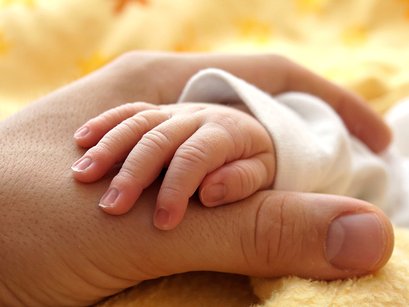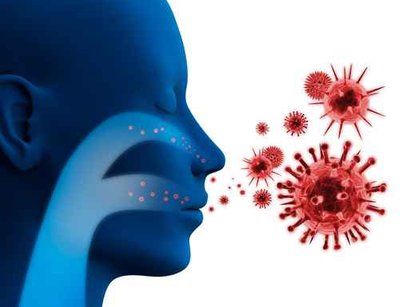Respiratory Syncytial Virus


Respiratory syncytial virus (RSV) is an enveloped, helical, single stranded RNA (-) virus with a diameter of 150 to 200 mm. RSV is the major agent of infection in the respiratory tract of children under two, producing bronchiolitis, pneumonia, tracheobronchitis and otitis. The virus gives rise to major disease outbreaks in nursing populations during the winter in temperate climates. In tropical areas, this epidemic character is less clearly marked.
Clinical features: RSV is a very common virus that leads to mild, cold-like symptoms in adults and older, healthy children. It can be more serious in young babies, especially to those in certain high-risk groups.
RSV is easily spread by physical contact. Touching, kissing, and shaking hands with an infected person can spread RSV. The disease spreads from person to person through contact with contaminated, tiny droplets or objects that the droplets have touched.
Symptoms vary and differ with age. Infants under the age of 1 are most severely affected and often have the most trouble breathing. Older children usually have only mild, cold-like symptoms. Symptoms usually appear 4 - 6 days after coming into contact with the virus.
Diagnosis: RSV infection can be diagnosed in the laboratory by direct methods (antigen direct detection in clinical samples, culture techniques or nucleic acid tests) or by serological tests to measure the presence of IgM or the increase of IgG titers. Heteroploid cell lines like HEp‐2 or Vero cells are used in many laboratories for the culture of RSV.
Treatment: Currently the treatment of RSV consists of hydration and oxygenation until the disease completes its cycle. Antibiotics do not treat RSV and mild infections go away without treatment. Infants and children with a severe RSV infection may be admitted to the hospital so they can receive oxygen, humidified air, and fluids via IV. A breathing machine (ventilator) may be needed.
Related products
- RESPIRATORY SYNCYTIAL VIRUS MAB
- AMPLIRUN® TOTAL FLUA/FLUB/RSV CONTROL (SWAB)
- SARS-COV-2 / FLU A / FLU B / RSV REALTIME PCR KIT
- RESPIRATORY SWAB MATRIX NEGATIVE CONTROL
- RESPIRATORY SYNCYTIAL VIRUS IFA
- RESPIRATORY VIRUS Mab
- PNEUMOSLIDE
- RESPIRATORY SYNCYTIAL VIRUS ELISA
- RESPIRATORY VIRAL SCREENING &IDENTIFICATION MAb
- RESPIRATORY SYNCYTIAL VIRUS VIRCLIA
- SARS-CoV-2/FLU/RSV REALTIME PCR KIT
- AMPLIRUN® TOTAL SARS-COV-2/FLUA/FLUB/RSV CONTROL (SWAB)
- AMPLIRUN® TOTAL RESPIRATORY VIRAL PANEL CONTROL
- AMPLIRUN® RESPIRATORY SYNCYTIAL VIRUS RNA CONTROL

